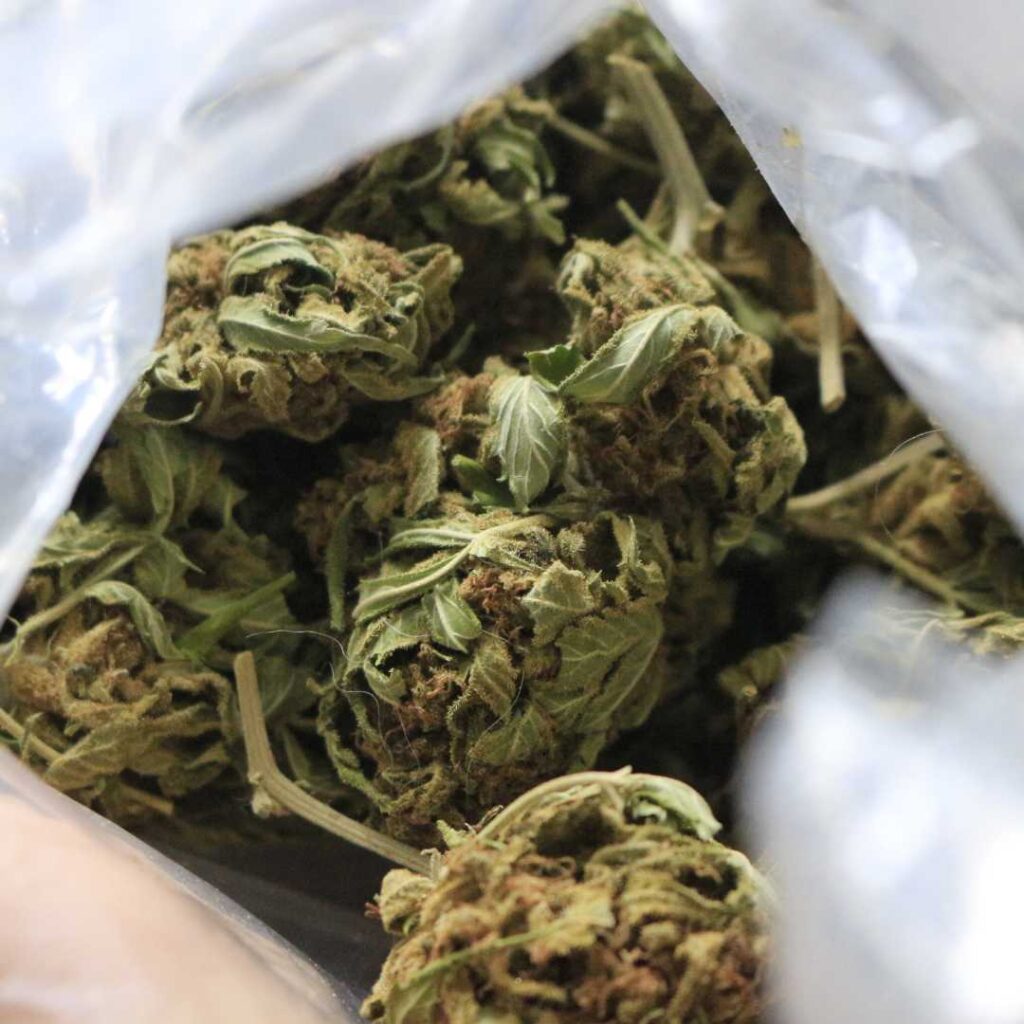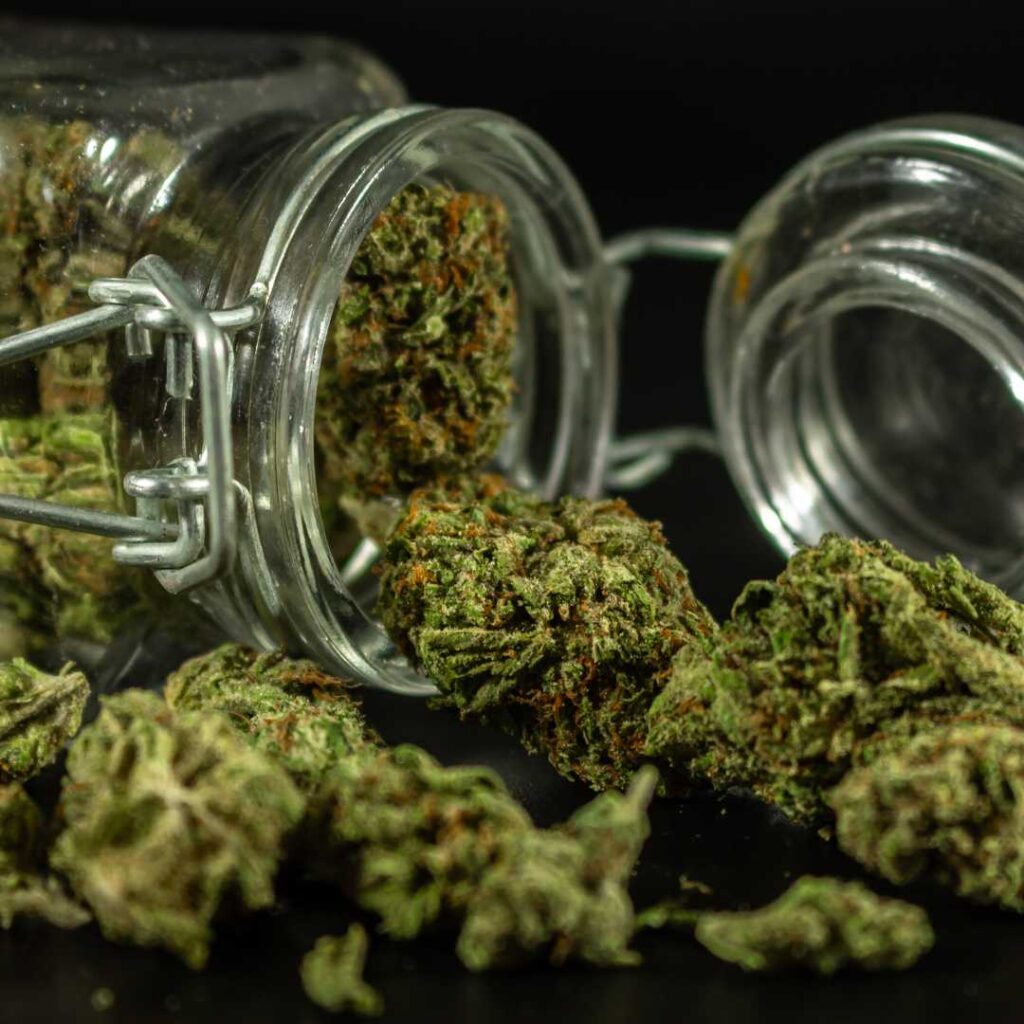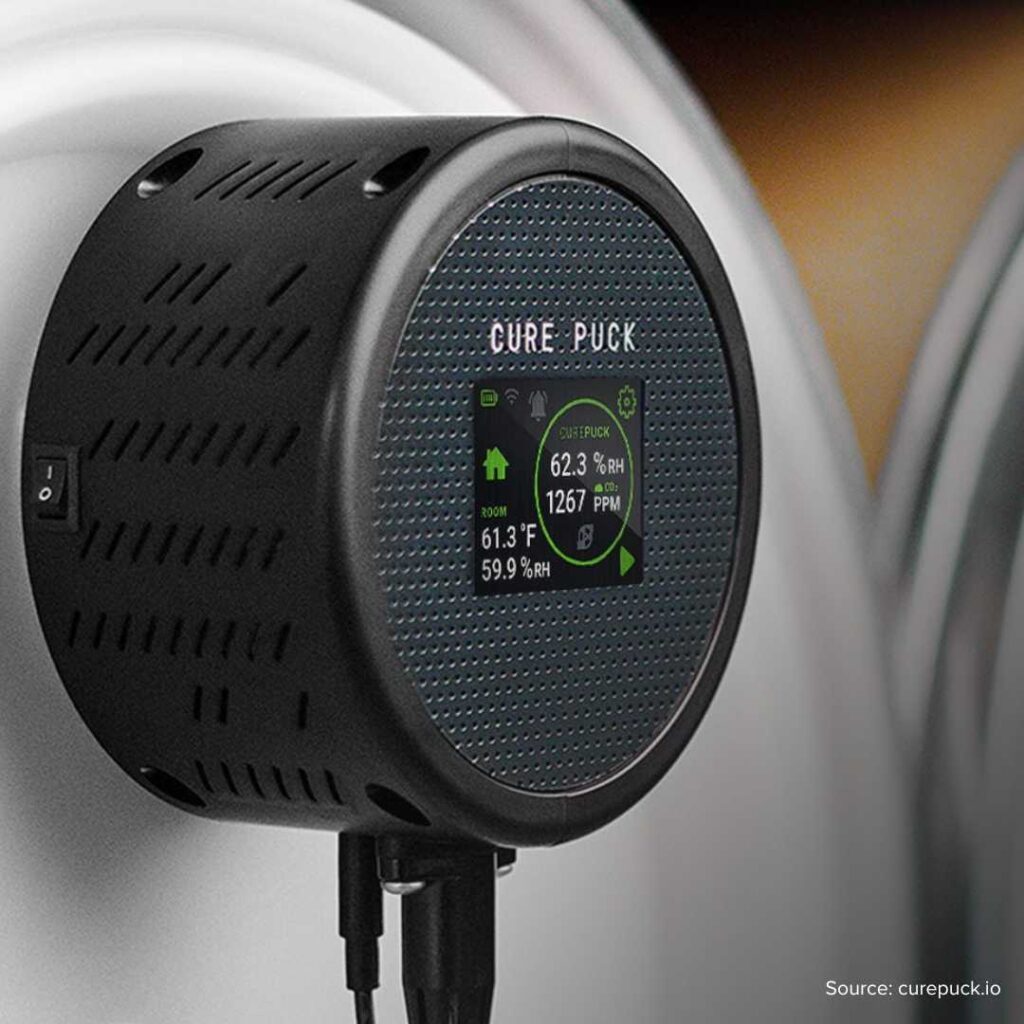The Art & Science of Curing Cannabis: Curing Vessel Strategies for Long‑Term Stability
You’ve invested in vertical racks and mobile shelving to save labor. Smart. But if your curing vessels leak, contaminate, or rehydrate your buds, that ROI drains away.
We all know growers who’ve learned this lesson the hard way. For instance, gamma‑seal buckets feel airtight until sensors show that CO₂ spikes inside match employee presence outside.
Vessel choice is post‑harvest infrastructure. You can’t afford oversights. No vessel is truly hermetic. Your cure container lives in its ambient microclimate, exchanging gas and moisture whether you like it or not.
Vessel Choice: The Overlooked ROI Killer
Gamma‑seal buckets are inexpensive until each bucket rehydrates your product in a humid hallway. That same bucket leaks CO₂ and ethylene, so your carefully dialed VPD means nothing.
Turkey bags with one‑way valves cost a few dollars more and let excess humidity escape, but they tear easily.
Glass jars lock in your cure best, but hundreds of jars mean hundreds of fill‑and‑clean cycles, plus extra headcount.
So, what’s a grow team to do?
Here’s a close look at the primary options on the market and what can go wrong if you’re not paying attention (and how you can mitigate those concerns).
Gamma‑Seal Buckets: Cheap, Stackable, Leaky
Perhaps you’ve stacked freshly dried buds into five‑gallon gamma buckets, assuming a perfect seal. We’ve all been there. But after a day or two, you crack the lid and find everything steaming inside. Yikes.
A study by Drs. Allison Justice and Marcus Rogan confirm what’s happening: Gamma buckets exchange gas with the room quite freely; the environment within the bucket very closely matches the environment outside of that bucket.
Sanitation tip: Never nest empty buckets. Instead, invert them and pyramid‑stack on clean plastic so moisture drains away and airflow clears residual biofilm.

Turkey Bags and Valve Liners: Breathable Alternatives
Turkey bags with integrated one‑way valves give you an escape hatch for humidity—no lid‑cracks required. In practice, membrane quality varies by manufacturer. Some membranes clog; others underperform in high‑VPD environments.
Tuck a push‑style sensor inside each bag. Log absolute humidity and temperature. When you see a surge, swap bags or upgrade valve tech.

Glass Jars: Craft Curing at a Cost
Nothing beats a hermetic glass jar for small‑batch consistency. You see precisely what you’ve got, and inert glass won’t interact with terpenes. But loading, labeling, scrubbing, and sterilizing dozens or hundreds of jars introduces labor bottlenecks.
If you’re below 100 lbs. per week, jars make sense. Beyond that, calculate your extra labor hours vs. the premium you can charge for “jar‑cured” flower.
Wax‑Lined Barrels: Bulk Storage’s Double‑Edged Sword
Wax-lined barrels let you cure large batches by rolling them to mix moisture evenly. But they’re expensive, bulky (they don’t stack), and need a special cleaning area plus extra labor to keep the inside sanitary.
For facilities pushing 1,000 lb runs, barrels can pay off if you factor in forklift time, sanitation labor, and ceiling clearance.
Modified Atmosphere Packaging: Lessons from Tuna Cans
Back in the Prop . 215 era, growers packed buds in nitrogen‑flushed tuna cans. Flavor suffered. Those little cans delayed oxidation, but buds lost their actual characteristics. Today’s MAP pouches use desiccant packs or calibrated nitrogen flushes. They stabilize moisture and extend shelf life, but you trade terpene vibrancy for oxidative protection.
Sanitation and Staging: Nested vs. Pyramid‑Stack
Your sanitation SOP must shine whether you choose buckets, bags, jars, or barrels.
Nested totes harbor moisture and biofilm; pyramid‑stack them inverted on clean PVC or painter’s plastic. Wipe down trim rooms and staging hallways to the same VPD spec as your cure space.
Every transfer—rack to bucket, bucket to trim bench, bench to jar—is a microclimate handshake.
Keep your specs tight.
Smarter Monitoring and Auto‑Burp
Gone are the days of “crack the lid” guesswork.
Auto‑burp devices like Cure Puck trigger air exchange when absolute humidity spikes. Grove Bags combine breathable liners with calibrated valves. Push-style sensors feed you real‑time VPD, RH, and temperature data—no more second‑guessing.


Scaling Your Vessel Strategy
Match the vessel to the operation size and margin:
- Craft (< 100 lb/wk): Glass jars for premium presentation.
- Mid‑tier (100–500 lb/wk): Buckets + liners for balance of cost and performance.
- High‑volume (> 500 lb/wk): Barrels + MAP for bulk efficiency.
Combine mobile racking with nestable totes to reclaim vertical space and streamline forklift runs. Your real estate is as valuable as your buds.
Focus Areas: Hallways, Trim Rooms, Microclimates
Don’t let hallways become post‑harvest blind spots.
A humid trim room will pull moisture back into your cured flower faster than you can say “botrytis.” Track VPD at every touchpoint—dry room, staging bay, trim bench, jar storage—and enforce uniform specs.
Take control of your curing vessels, and you’ll protect terpene profiles, stabilize cannabinoids, and extend shelf life. That’s how you turn every square foot into profit and every bud into a brand‑builder.
